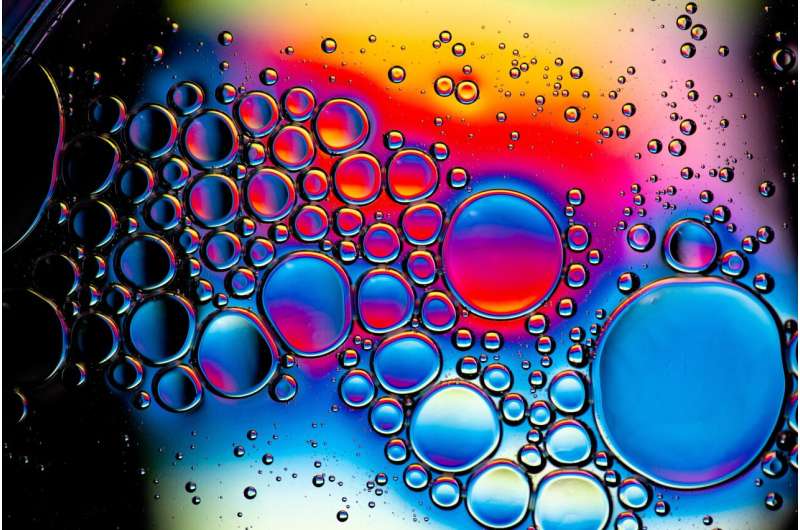Droplets in cells found to determine the accumulation of proteins in age-related diseases

Tiny droplets in cells can accelerate the accumulation of protein deposits in diseases such as Alzheimer's and Parkinson's disease, but they can also hinder this accumulation. While they will worsen the accumulation if the proteins stick to the edge of the droplets, the situation actually improves when they are incorporated into the droplets. Chemists from Radboud University and the University of Twente are set to publish their new findings in Science Advances on December 2.
Molecules do not just bob around inside our cells. We know for about a decade now that many molecules form tiny droplets in our cells. These droplets are formed by a chemical process called phase separation. "It's just like oil in water," explains researcher Brent Visser. "The only difference is that these droplets usually consist of a complex mix of large molecules that are found in the cell, such as RNA and proteins."
Without these droplets, our cells would not work. They ensure that the molecules can converge in the right place. But scientists do not yet know whether cells can actually control this process or whether the droplets have an impact on disease development.
On the edge
In age-related diseases such as Alzheimer's disease, ALS or Parkinson's disease, problems arise when proteins in the brain form accumulations (which are known as "plaques"). Researchers have now seen that the composition of droplets largely determines how quickly these disease proteins lead to accumulations in cells. When proteins stick to the edge of the droplets, accumulations occur more rapidly. But if they are incorporated into the droplets, this process can be slowed down. "Nobody knew that it was actually the edge of the droplets that were so vital to this process," says physical chemist Evan Spruijt.
"We know that when it comes to these types of diseases, there are a lot of factors that influence protein accumulation," says Spruijt. "We've now added something new to this list. Now that we know that droplets can also play a role in this process, we can start to search more specifically for the causes of these diseases."
Accurate work
The Nijmegen researchers specialize in droplets. In an effort to mimic the inside state of cells, they made their own droplets with different properties. "Because we're using a microscope to see exactly where the proteins are and how rapidly the accumulation occurs, we're able to map out exactly what's happening. This is something that can't be measured properly in a living cell," explains Visser.
Some scientists think that when it comes to age-related diseases, the disease proteins themselves form droplets, which then harden to subsequently form plaques. "But in the case of most proteins, it's impossible that this would occur in a cell's natural state," says Spruijt. "One major distinction between our study and other studies is that we've shown that it's actually other droplets that affects the accumulation of these proteins. It may seem like a minor detail, but it is an essential difference."
The researchers will now continue to examine the ways in which the edge of the droplets can be modified in such a way that these disease proteins no longer stick to them, and a number of other proteins do. This may not only help to prevent the accumulation of disease proteins, but it may also provide a better understanding of the natural function of these droplets.
More information: Wojciech P. Lipiński et al, Biomolecular condensates can both accelerate and suppress aggregation of α-synuclein, Science Advances (2022). DOI: 10.1126/sciadv.abq6495
Journal information: Science Advances
Provided by Radboud University




















